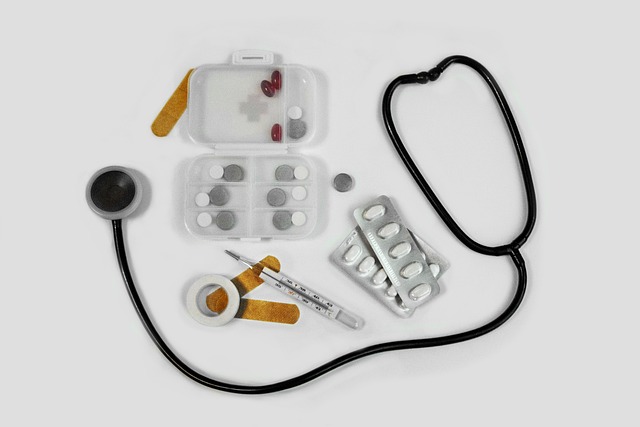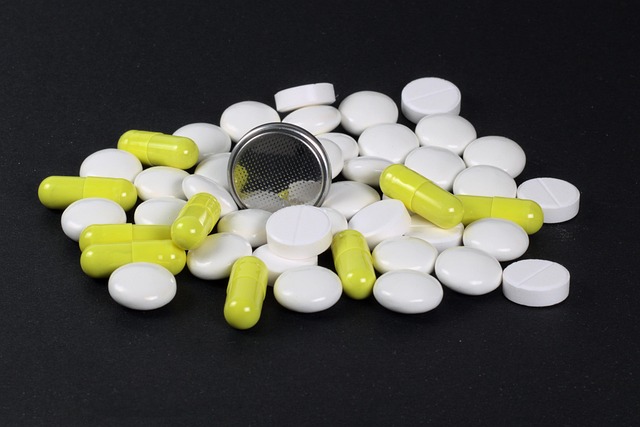Semaglutide medication is a revolutionary treatment for Type 2 diabetes, mimicking natural hormones to boost insulin production, suppress glucagon, and improve blood sugar control. Its innovative approach offers advantages over traditional therapies, aiding in weight management and meal planning. By enhancing natural insulin use, semaglutide lowers blood sugar levels effectively, reduces appetite, and promotes satiety. This multifaceted medication also provides cardiovascular benefits and improves overall metabolic health, making it a valuable tool for diabetes management and enhanced well-being. However, it requires careful consideration, monitoring, and regular healthcare provider follow-ups to ensure optimal results and minimize side effects. Real-life success stories highlight its transformative potential in achieving exceptional blood sugar control and even diabetes remission.
“Unraveling the secrets of insulin regulation, this article delves into the transformative power of semaglutide medication. With a focus on managing diabetes, we explore how this innovative therapy increases the body’s natural insulin use. From understanding insulin’s role to uncovering the mechanisms behind semaglutide’s action, we provide a comprehensive guide. Discover the benefits of enhanced insulin sensitivity and learn about administration, dosage, and real-life success stories associated with this game-changing semaglutide medication.”
Understanding Insulin and Diabetes

Insulin is a hormone responsible for regulating blood sugar levels by signaling cells to take up glucose from the bloodstream. In people with diabetes, this process is impaired, leading to high blood sugar. Type 2 diabetes, the most common form, is characterized by insulin resistance, where cells don’t respond effectively to insulin. As a result, the pancreas produces more insulin to compensate, but eventually, it may not keep up, causing blood sugar levels to rise.
Semaglutide medication has emerged as a game-changer in diabetes management. It mimics a natural hormone that stimulates insulin production and suppresses glucagon, another hormone that raises blood sugar. By doing so, semaglutide enhances the body’s natural insulin use, helping to lower blood sugar levels. This innovative approach offers significant advantages over traditional insulin therapies, particularly for those with Type 2 diabetes who struggle with weight management and meal planning.
Introduction to Semaglutide Medication

Semaglutide medication has emerged as a game-changer in managing type 2 diabetes. This innovative therapy mimicks the actions of a natural hormone, GLP-1 (glucagon-like peptide-1), which plays a crucial role in regulating blood sugar levels. By mimicking this hormone, semaglutide helps increase the body’s natural insulin use, thereby improving glycemic control.
The medication works by slowing down the emptying of the stomach, leading to a more gradual absorption of glucose. This action extends the time between meals and reduces hunger pangs, making it easier for patients to stick to a healthy diet. Additionally, semaglutide promotes feelings of fullness, which can aid in weight management—a significant benefit given that excess weight is a primary risk factor for type 2 diabetes.
How Semaglutide Improves Insulin Sensitivity

Semaglutide, a medication widely known for its role in diabetes management, has been shown to significantly increase insulin sensitivity in the body. Its mechanism involves mimicking the effects of natural hormones, which stimulate cells to take up glucose more efficiently. By doing so, semaglutide enhances the body’s ability to use insulin effectively, thereby improving blood sugar control.
This medication works beyond just reducing blood sugar levels; it sends signals to the brain to feel fuller, leading to reduced appetite and potential weight loss. The increased insulin sensitivity resulting from semaglutide treatment also offers cardiovascular benefits by lowering blood pressure and bad cholesterol levels, making it a multifaceted tool in maintaining overall health.
Mechanisms Behind Semaglutide's Action

Semaglutide, a revolutionary semaglutide medication, has gained significant attention in diabetes management due to its unique mechanism of action. Its primary effect is to increase the body’s natural insulin use by mimicking and enhancing the role of GLP-1 (glucagon-like peptide-1) hormones. When administered, semaglutide binds to specific receptors in the gut, leading to a delayed and prolonged decrease in blood glucose levels. This process not only stimulates insulin secretion but also reduces glucagon release, resulting in improved glycemic control.
The medication’s ability to slow gastric emptying further contributes to its efficacy. By slowing down food passage through the stomach, it promotes satiety, leading to reduced calorie intake. This dual action—insulin stimulation and appetite suppression—makes semaglutide a potent tool in treating type 2 diabetes. Its mechanism provides a more natural approach to managing blood sugar levels, offering hope for improved patient outcomes and quality of life.
Benefits of Enhanced Insulin Utilization

The enhanced insulin utilization brought about by semaglutide medication offers a multitude of benefits for individuals managing diabetes. By increasing the body’s natural ability to use insulin, this medication helps to normalize blood sugar levels, reducing the risk of both short-term complications like hypoglycemia and long-term issues such as nerve damage, kidney disease, and cardiovascular problems.
This improved insulin sensitivity also contributes to a significant reduction in weight for many patients. The medication aids in appetite regulation, leading to decreased food intake and increased feelings of fullness. Consequently, it not only assists in managing diabetes effectively but also plays a crucial role in promoting overall metabolic health and well-being.
Side Effects and Considerations

While semaglutide medication has shown remarkable effectiveness in increasing the body’s natural insulin use, it’s crucial to be aware of potential side effects and considerations. Like any prescription drug, semaglutide isn’t suitable for everyone, and some individuals may experience adverse reactions such as nausea, vomiting, or diarrhea. These symptoms are usually temporary but should be discussed with a healthcare provider. Additionally, regular monitoring of blood sugar levels is essential to prevent hypoglycemia (low blood sugar), a common concern with insulin-related treatments.
It’s important to remember that semaglutide medication requires proper administration and adherence to the prescribed dosage and schedule. Closely following your healthcare provider’s instructions and scheduling regular check-ups are vital for optimal results and to minimize risks. Informing your doctor about any pre-existing health conditions or medications you’re taking is also critical, as these factors can influence how your body responds to semaglutide therapy.
Administration and Dosage Guidelines

The semaglutide medication is administered via subcutaneous injection, typically once weekly. The dosage starts at a low level and is adjusted based on individual patient response and blood sugar levels. It’s crucial to adhere to the prescribed administration schedule for optimal results in enhancing natural insulin use.
Dosage guidelines vary depending on the specific medical context and patient needs. Healthcare providers carefully monitor patients, considering factors like age, weight, kidney function, and other medications. Regular follow-ups are essential to adjust the semaglutide dosage, ensuring it remains effective while minimising potential side effects.
Real-life Success Stories

In real-life scenarios, the semaglutide medication has proven to be a game-changer for many individuals struggling with type 2 diabetes. These success stories highlight the positive impact this innovative therapy can have on people’s lives. For instance, numerous patients have shared their experiences of achieving remarkable blood sugar control and even reaching remission after incorporating semaglutide into their treatment plan.
One such story involves a patient who had been fighting high blood sugar levels for years. Through regular injections of semaglutide, they witnessed a significant decrease in their A1C levels and no longer required multiple daily insulin doses. This transformation not only improved their overall health but also increased their energy levels and improved their quality of life. These real-life examples serve as powerful testimonials to the effectiveness of semaglutide medication in enhancing the body’s natural insulin use.
